I would like to add to the answer. I hope people would improve this answer though.
First of all it DOES work.
XIB:

Result:

I would like to subclass UIView for a long time especially for tableViewCell.
This is how I did it.
It's succesful, but some part is still "awkward" in my opinion.
First I created a usual .h, .m, and xib file. Notice that Apple do not have the check box to automatically create an xib if the subclass you created is not a subclass of UIViewController. Well create those anyway.
#import <UIKit/UIKit.h>
#import "Business.h"
@interface BGUIBusinessCellForDisplay : UITableViewCell
+ (NSString *) reuseIdentifier;
- (BGUIBusinessCellForDisplay *) initWithBiz: (Business *) biz;
@end
Really simple UITableViewCell, that I want to initialize latter with biz.
I put reuseidentifier which you should do for UITableViewCell
//#import "Business.h"
@interface BGUIBusinessCellForDisplay ()
@property (weak, nonatomic) IBOutlet UILabel *Title;
@property (weak, nonatomic) IBOutlet UIImageView *Image;
@property (weak, nonatomic) IBOutlet UILabel *Address;
@property (weak, nonatomic) IBOutlet UILabel *DistanceLabel;
@property (weak, nonatomic) IBOutlet UILabel *PinNumber;
@property (strong, nonatomic) IBOutlet BGUIBusinessCellForDisplay *view;
@property (weak, nonatomic) IBOutlet UIImageView *ArrowDirection;
@property (weak, nonatomic) Business * biz;
@end
@implementation BGUIBusinessCellForDisplay
- (NSString *) reuseIdentifier {
return [[self class] reuseIdentifier];
};
+ (NSString *) reuseIdentifier {
return NSStringFromClass([self class]);
};
Then I eliminated most init codes and put this instead:
- (BGUIBusinessCellForDisplay *) initWithBiz: (Business *) biz
{
if (self.biz == nil) //First time set up
{
self = [super init]; //If use dequeueReusableCellWithIdentifier then I shouldn't change the address self points to right
NSString * className = NSStringFromClass([self class]);
//PO (className);
[[NSBundle mainBundle] loadNibNamed:className owner:self options:nil];
[self addSubview:self.view]; //What is this for? self.view is of type BGCRBusinessForDisplay2. That view should be self, not one of it's subview Things don't work without it though
}
if (biz==nil)
{
return self;
}
self.biz = biz;
self.Title.text = biz.Title; //Let's set this one thing first
self.Address.text=biz.ShortenedAddress;
//if([self.distance isNotEmpty]){
self.DistanceLabel.text=[NSString stringWithFormat:@"%dm",[biz.Distance intValue]];
self.PinNumber.text =biz.StringPinLineAndNumber;
Notice that it's really awkward.
First of all the init can be used in 2 ways.
- It can be used to right after aloc
- It can be used by we having another existing class and then we just want to init that existing cell to another biz.
So I did:
if (self.biz == nil) //First time set up
{
self = [super init]; //If use dequeueReusableCellWithIdentifier then I shouldn't change the address self points to right
NSString * className = NSStringFromClass([self class]);
//PO (className);
[[NSBundle mainBundle] loadNibNamed:className owner:self options:nil];
[self addSubview:self.view]; //What is this for? self.view is of type BGCRBusinessForDisplay2. That view should be self, not one of it's subview Things don't work without it though
}
Another icky things that I did is when I do [self addSubview:self.view];
The thing is I want self to be the view. Not self.view. Somehow it works nevertheless. So yea, please help me improve, but that's essentially the way to implement your own subclass of UIView.

